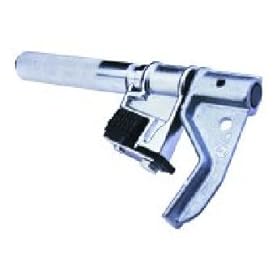Re: Buggered threads on new crankshaft
I pulled the flywheel off my 135 today and got the same, 7/8" x 14 tpi. I don't see this crank being that hard, its mushroomed so it has to be somewhat malleable. I chucked it up in the largest lathe this afternoon and ran a thread rolling die over it till the threads were again square. The nut fits fine now.
It took about an hour to get it set up, about 10 minutes to fix.
It was actually my impression that the crank was pretty soft, at lease where the threads are. The weight area and bearing surfaces are most likely much harder.
The adjustable thread rolling die head I have sold for over $2300 about 15 years ago, they're probably gone up a grand or so by now. I actually got mine used at an auction when a local shop sold out. I bought the remaining contents of the shop for a song which included quite a bit of specialty tooling. I sold off the screw machines and one of equipment and kept only two lathes and two knee mills. They were making billet suspension parts so much of the equipment wasn't of much use outside of a manufacturing operation and I had no intention of manufacturing parts.
I downsized what I had here a few years ago as well, it just didn't pay to house several of the larger machines which might get used once or twice a year. Back when I started building up my equipment assortment I was more into automotive restoration and custom fabrication and doing some production run lathe work on the side which helped support the hobby and pay the rent.
As far as the rethreading tool;
http://www.amazon.com/exec/obidos/tg...?v=glance&s=hi
these are good for thread clean up where a normal die cannot be used, the dies are about 1" wide, and these do not 'cut' threads very well. These are a good choice for repairing a threaded shaft in the center or to repair isolated threads.
Snap-On tools also sells a version of this.
http://buy1.snapon.com/catalog/item...&group_ID=1150&store=snapon-store&dir=catalog
These are sold mainly as a thread repair tool but have limited uses. The fact that the back side of the thread drags against a bronze plate and not a facing die creates much friction and on occasion thread damage.




















